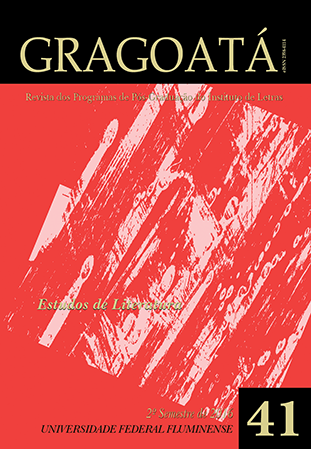Digital José Juan Tablada and the genesis of a hyper reading
DOI :
https://doi.org/10.22409/gragoata.v21i41.33438Mots-clés :
Digital Humanities, Latin-American Literature, Mexican Poetry, Visual Poetry.Résumé
This essay describes how the development of two digital projects dealing with the works of the Mexican poet José Juan Tablada affected the nature of the reading and writing practices of the author and other participants. The first project, produced in the years of 1997 and 1998, comprises two CD-ROM’s with two important sets of journalistic chronicles: La Babilonia de Hierro. Crónicas neoyorquinas (1920-1936) (724 chronicles) and México de día y de noche. Crónicas mexicanas (1928-1943) (399 chronicles). The second one resulted in another CD-ROM, José Juan Tablada: letra e imagen (poesía, prosa, obra gráfica y varia documental) (2003), which included Tablada’s graphic archive, his four visual poetry books and other works involving the relationship between word and image. The project also includes a website (www.tablada.unam.mx). The author points out how automated text searches provided by the first CD’s helped in the annotation process of the graphic archive pieces —which encompass watercolors; pencil, charcoal and ball pen drawings; photographs and clippings from reviews and journals—, and how the careful observation of these images revealed information of Tablada’s life and works. This information had remained unattended because the pieces of the archive had been considered almost exclusively in their visual dimension rather than in relation with the literary realm. The author discusses the three modalities of reading —close, hyper and machine reading— proposed by N. Katherine Hayles, in How We Think (2012), and shows how Tablada’s digital research projects lead to practice the two latter reading modalities in a natural and unperceived way. The recollection of the whole experience also demonstrated that hyper reading promoted by the construction of the website resulted in mnemonic modifications that linked the graphic archive images to Tablada’s biographical discourse.
---
Original in English.
Téléchargements
Téléchargements
Publiée
Numéro
Rubrique
Licence
AUTORIZAÇÃO
Autores que publicam em Gragoatá concordam com os seguintes termos:
Os autores mantêm os direitos e cedem à revista o direito à primeira publicação, simultaneamente submetido a uma licença Creative Commons Atribuição 4.0 Internacional (CC BY 4.0), que permite o compartilhamento por terceiros com a devida menção ao autor e à primeira publicação pela Gragoatá.
Os autores podem entrar em acordos contratuais adicionais e separados para a distribuição não exclusiva da versão publicada da obra (por exemplo, postá-la em um repositório institucional ou publicá-la em um livro), com o reconhecimento de sua publicação inicial na Gragoatá.
A Gragoatá utiliza uma Licença Creative Commons - Atribuição CC BY 4.0 Internacional.











